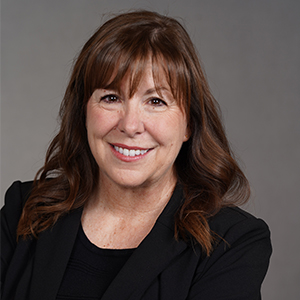HousingWire Editor in Chief Sarah Wheeler sat down with Adam Carmel, founder and CEO at Polly, to talk about the ways technology should be delivering ROI for lenders.
Sarah Wheeler: The cost to originate a mortgage is higher than ever, while companies have invested more in technology than ever before. What is the disconnect there?
Adam Carmel: Since the great financial crisis there are certain things that lenders and banks have to spend money on today that have created more costs to their business, independent of technology. For example, compliance — it’s hard to really automate compliance. And for about two decades, the industry has been using the same kind of technology. It’s gotten more expensive, but it’s delivered the same or less value, so some of the legacy software itself has effectively become a commodity, while the costs have continued to rise.
This was one of the motivators for me when Polly was originally started. I was a mortgage lender and I saw firsthand the shortcomings of the various kinds of software verticals. We ended up building our own product and pricing engine and we saw demonstrable ROI and value. Then we decided to take this and make it a platform — from submission all the way to loan sale, and everything in between. And we asked: How do we use this to drive ROI and maximize efficiency and productivity?
SW: Let’s talk about margins. How does Polly look to help companies in this very challenging time with margins?
AC: This goes back to the first question about driving ROI, because the cost of technology has more than doubled, meanwhile, revenue has generally been the same. So, you’re just seeing an erosion of net operating margins.
Polly has built a patent-pending margin management engine that allows for unlimited granularity, flexibility, and configurability — and you can scale it out across any distribution channel. So, customers are able to use an unlimited number of parameters to optimize their margin per loan. This enables two things: one, more revenue per loan, and two, more volume, depending on what that margin is. That is the ultimate lever — it is really the only lever that the mortgage lending community has.
SW: So did you start Polly because of what you saw as a lender?
AC: Yes. I worked for a mortgage company from 2007 until 2013 — that’s where I learned the industry. Then I started a mortgage company in 2013 that went on until 2019. And during that six or seven-year period, we were using the largest pricing engine in the market and we weren’t able to drive the margin as granularly as we wanted. There was no automation in the workflows, the analytics were kind of stale and incomplete, and so forth. Meanwhile, the costs kept on going up.
So I went to the board, and said I’d like to sell the mortgage company. We’ve built something here that’s got real value, but we’re going to throw that away and build a brand new back end, and learn from everything that we’ve done over the last several years. And that was how Polly got started — it was me solving all of the pain points that I had experienced for the previous decade.
SW: What’s the advantage of coming from the lending side as opposed to the tech side?
AC: Because I came from a lending background, I know where the problems are and we know how to solve them in a very creative and innovative way. And then we are able to take those solutions and productize them in partnership with all of our customers. The feedback from our partners has created this kind of halo effect, where we build a new thing, a new feature, the customers then take it to the next level, and then it just becomes this unbelievable flywheel.
SW: Why did you decide to go in the tech direction instead of growing the mortgage business?
AC: When I started to see in real time all of the problems that were out there in the capital markets category, I thought, I’m young enough to be able to go pursue this and help to solve these problems within the industry. I’m deeply passionate about this because of the long-term impact it could have, not only for the mortgage lending community, but also the consumer.
When you originate a mortgage, it’s a standardized piece of paper, with a signature and a price. The only thing that is differentiated from one lender to the next is the price. I was very inspired early on to ask, how much of this industry’s costs are driving a higher rate for the consumer? And is there anything that we can do about that? I think that if we didn’t do it at Polly, undoubtedly as we sit here close to 2024, someone else would have done it. This is too big of a problem not to solve.
SW: How did you build the team and what do you look for when hiring?
AC: We’ve got an amazing team — that’s our secret sauce. But within that team, we’ve got this incredible nexus of domain and institutional knowledge, and then technical knowledge. I looked to surround myself with world-class people who would be really strong in each part of the business. We’ve been able to upgrade the team that we have every year and now it just feeds on itself.
SW: What have you learned building your team?
AC: I think you always learn what you don’t want more than what you do want over time. We need to have enough experts within the mortgage capital markets, but then as you’re thinking about scaling up the business, you want to consider who’s done that before but also look at other software verticals. Because outside of a very select few, there haven’t been many that have done it in this industry.
We like to challenge ourselves, to test the status quo and innovate not only within the products but the team as well. What makes us cool and special is this kind of unique experience, from the different expertise across the technical org, to the product or the go to market org, and taking all this best-in-breed talent and ensuring that everyone’s working really, really well together.
SW: Does AI play a big role in what you are doing at Polly?
AC: Anyone who isn’t considering or thinking about how to apply AI is making a mistake. But as exciting as it is to talk about that as a platform, there’s also a major educational curve to it as well. And it’s an area where you’ve got to be really careful within this industry, because you cannot be off by one basis point. You need to be very, very tight and 100% buttoned up with regards to security and compliance and in data integrity. A lot of these new technologies are buzzy and great marketing, but when we do something, it has to have demonstrable ROI and value for the customer and our partners.
SW: What keeps you up at night?
AC: Everything! I’m a very paranoid person so I’m constantly looking over my shoulder. The most important thing for us is our team, and in parallel, our customer partners. I am constantly thinking about those two groups of people and what I need to do to ensure that they are really happy, that they understand our mission, see the vision, and then realize the vision. Talk is cheap — it’s all about our actions and our execution.
SW: From your perspective now as the head of a tech company, what do you wish you understood better as a lender about technology?
AC: When I look at the lenders today — the ups and downs over the last couple years have been unbelievable. The resiliency, the grit, the determination of lenders is unbelievable. I think that’s a requisite precondition to be in this industry as an operator.
When I was in lending, I think I always overestimated the impact technology or software, or more importantly, a switch in technology, would have on our business in the first six months or a year, and the difficulty in transitioning. But then I always underestimated the positive impact and ROI that technology could have over a two, three or four-year period.
If a lender or a bank or a credit union is planning to be in this industry for the next several years, there’s no better time than right now to look at new software. That’s true for any vertical — it doesn’t have to necessarily be a pricing engine. But this is the time to look at these things. We’ve seen such peaks and troughs in the industry, it would be so much easier for everyone to operate on a more steady state level. If you just had the most modern and sophisticated technology, you could flex up your volume in really phenomenal times and flex your volume down in difficult times.







Love the commentary and Adam’s perspective! Not only is technology the boost our industry needs, this is the ideal time to make the change – when everyone has a moment to review their process, adapt best practices and learn from what-NOT-to-do…